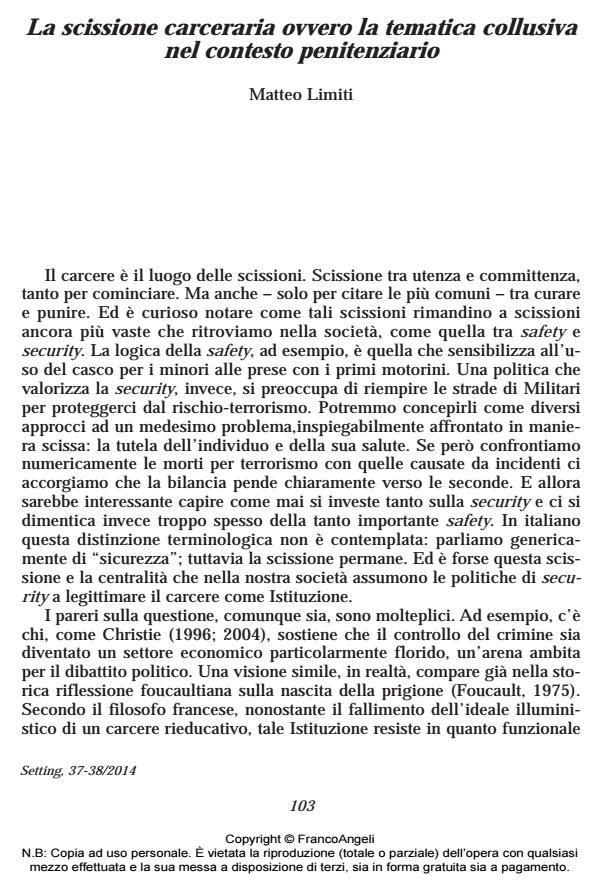La scissione carceraria ovvero la tematica collusiva nel contesto penitenziario
Journal title SETTING
Author/s Matteo Limiti
Publishing Year 2015 Issue 2014/37-38
Language Italian Pages 13 P. 103-115 File size 431 KB
DOI 10.3280/SET2014-037006
DOI is like a bar code for intellectual property: to have more infomation
click here
Below, you can see the article first page
If you want to buy this article in PDF format, you can do it, following the instructions to buy download credits

FrancoAngeli is member of Publishers International Linking Association, Inc (PILA), a not-for-profit association which run the CrossRef service enabling links to and from online scholarly content.
The article, starting from an overview of the prison as a place of splittings, examines the collusion risk factor that each operator working in prison is necessarily facing. A split Institution - as the prison is - easily leads to side and thus to collude. Starting from the etymological root of the word "collusion" and its use in the law, it gives then a definition of the term as used in Psychology to place it in the prison context. The article analyzes three different "collusive temptations" according to the different partners involved in the relationship: the client, the prison Officers and the prisoners. This leads finally to a new definition of the term "collusion", wider and not merely negative, borrowed from Renzo Carli
Matteo Limiti, La scissione carceraria ovvero la tematica collusiva nel contesto penitenziario in "SETTING" 37-38/2014, pp 103-115, DOI: 10.3280/SET2014-037006